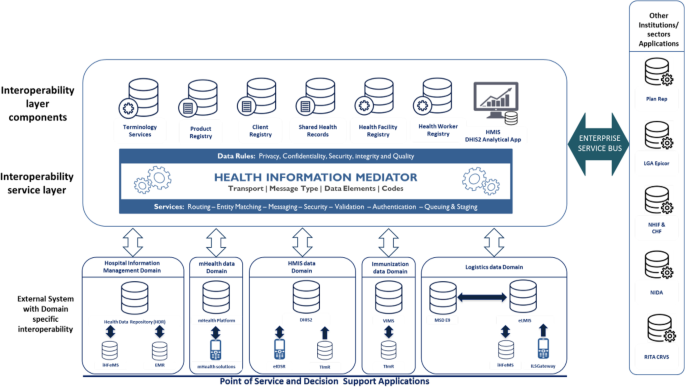
Advancing Healthcare: The Significance of Seamless Health Data Interoperability
Interconnected Health Systems:
Health Data Interoperability has become a cornerstone in the ongoing transformation of the healthcare landscape. In a digital era where information is key, the seamless flow of health data across diverse systems is crucial for providing comprehensive and efficient patient care. Interconnected health systems are at the heart of this evolution.
Breaking Down Information Silos:
One of the primary challenges in healthcare has been the existence of information silos, where data is confined within specific systems or departments. Health Data Interoperability breaks down these silos, enabling different healthcare entities and systems to share and access patient information seamlessly. This interconnected approach leads to a more holistic understanding of a patient’s health.
Enhancing Patient Care Coordination:
A significant benefit of Health Data Interoperability is the improvement in care coordination. When healthcare providers have access to a unified view of a patient’s medical history, treatment plans, and ongoing care, they can make more informed decisions. This coordination is especially critical in situations where patients receive care from multiple providers or transition between different healthcare settings.
Data Standardization for Consistency:
Achieving seamless interoperability requires the standardization of health data. The use of standardized formats and protocols ensures consistency in the way data is collected, stored, and exchanged. This standardization not only facilitates interoperability but also promotes accuracy, reducing the risk of errors in the interpretation of health information.
Empowering Patients with Access:
Health Data Interoperability extends beyond healthcare providers to empower patients themselves. When patients have access to their own health data, including test results, medication history, and treatment plans, they become active participants in their care. This transparency fosters a collaborative approach between patients and healthcare professionals, leading to more personalized and effective healthcare.
Innovations in Telehealth and Remote Monitoring:
The growth of telehealth and remote monitoring services is intricately tied to Health Data Interoperability. By enabling the seamless exchange of data between patients and healthcare providers, these innovations have become integral in delivering virtual healthcare services. Remote monitoring of vital signs, chronic conditions, and post-surgery recovery is now more streamlined, providing real-time insights for timely interventions.
Challenges in Implementation:
Despite the evident benefits, implementing Health Data Interoperability comes with challenges. Variations in technology, data privacy concerns, and the need for extensive collaboration among different healthcare stakeholders are hurdles that need to be addressed. Overcoming these challenges requires ongoing efforts in standardization, policy development, and technology integration.
The Role of Health Information Exchanges (HIEs):
Health Information Exchanges play a pivotal role in facilitating Health Data Interoperability. These platforms act as intermediaries, allowing healthcare organizations, providers, and payers to share and access health information securely. The establishment and expansion of robust HIEs contribute significantly to achieving a nationwide network of interoperable health data.
Regulatory Landscape and Future Directions:
The regulatory landscape has responded to the imperative of Health Data Interoperability. Initiatives like the 21st Century Cures Act in the United States emphasize the importance of data sharing and interoperability. Looking ahead, the continued evolution of regulations and standards will play a crucial role in shaping the future of Health Data Interoperability globally.
A Future of Connected Healthcare:
In conclusion, the journey toward seamless Health Data Interoperability is a pivotal aspect of the broader vision for connected healthcare. To delve deeper into the evolving landscape and stay updated on the latest developments, visit Health Data Interoperability. This dedicated resource offers insights into the transformative impact of interoperable health data, providing a glimpse into the future of interconnected and patient-centric healthcare systems.
